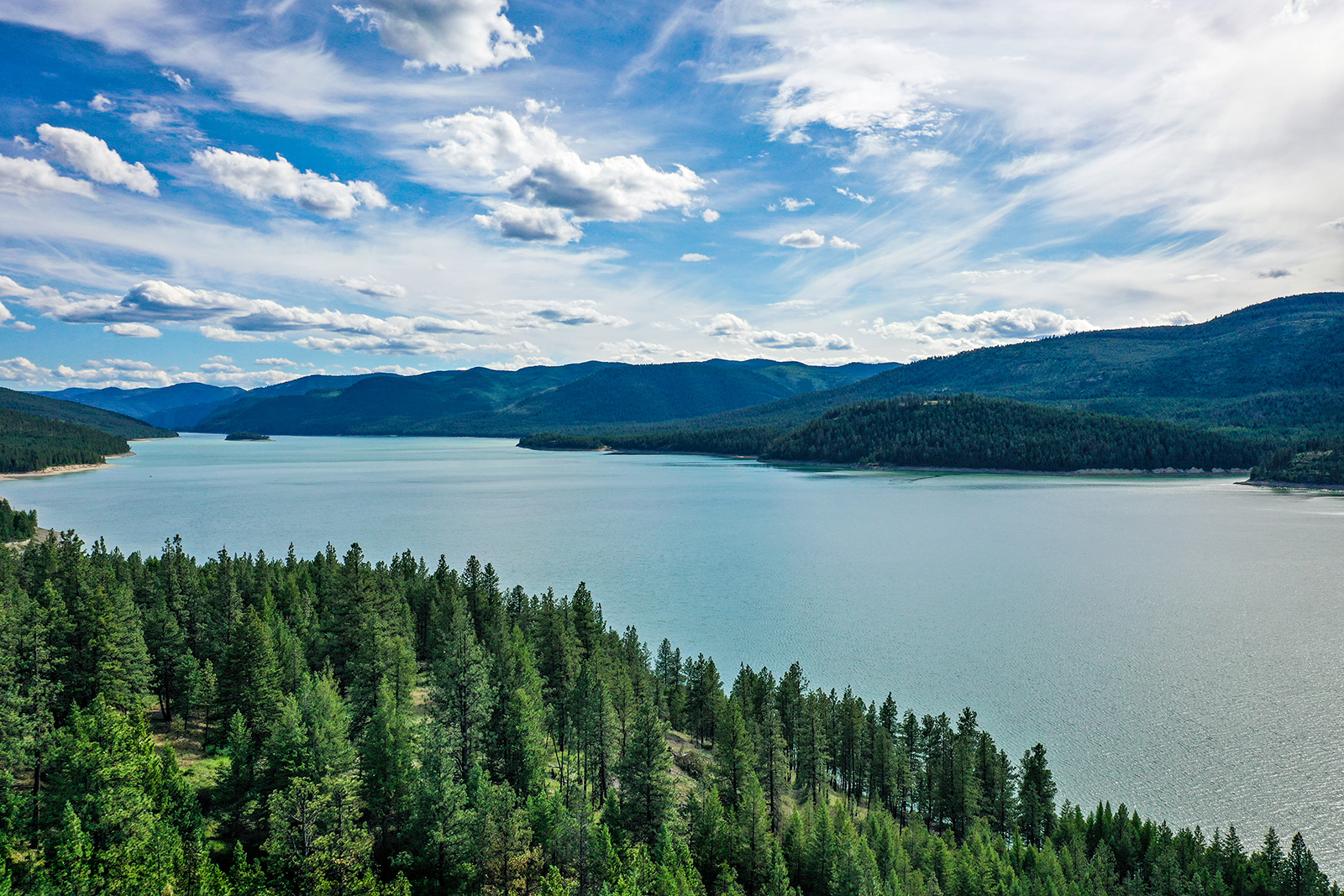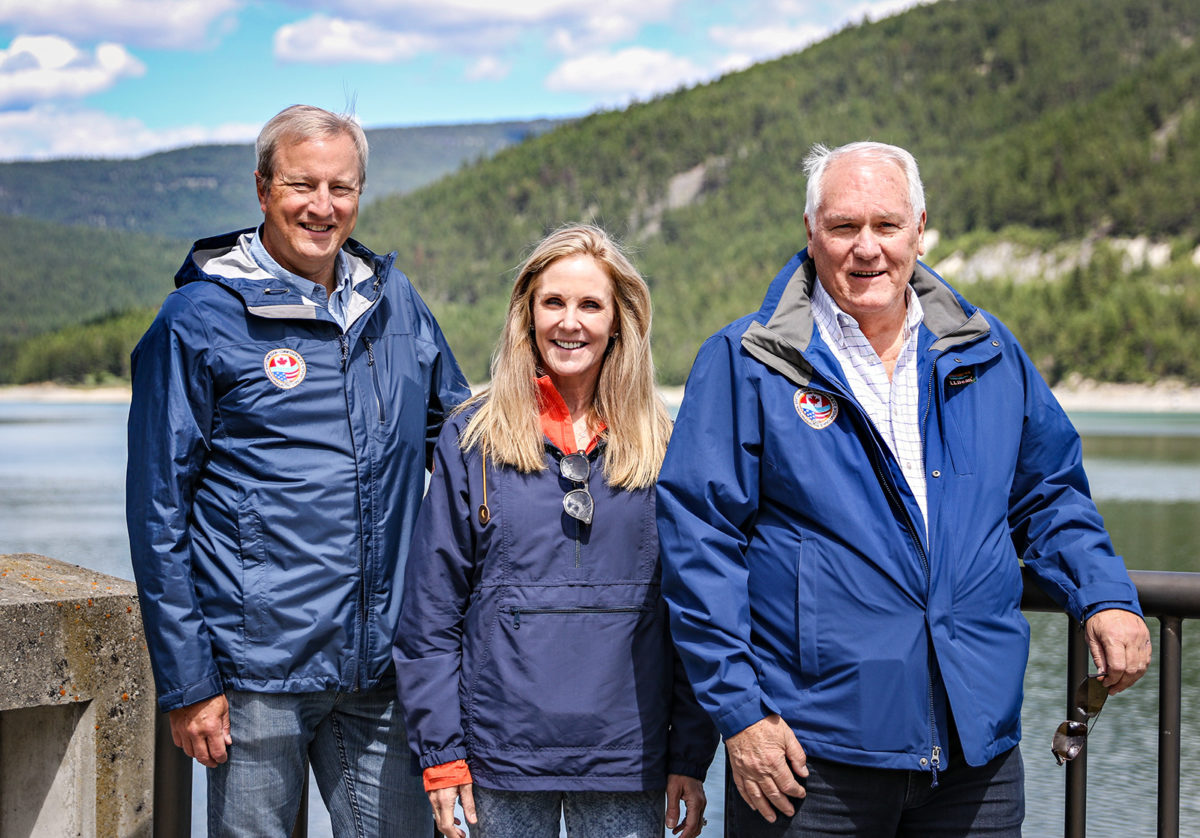As Boundary Water Dispute Escalates, Pressure Mounts for Federal Intervention
U.S. members of the International Joint Commission toured Libby Dam to learn more about B.C. mining deposits accumulating in the Elk and Kootenai river watershed
By Tristan Scott
Even with the U.S.-Canada border restricting travel for at least another month, the international exchange of mining waste leaching from British Columbia into a transboundary watershed touching Montana and Idaho has continued unmitigated, intensifying concerns to such a degree that in the span of 10 days in June a rare confluence of global entities has paid heed to an environmental calamity that’s been brewing for more than three decades.
In a deluge of letters, stakeholders on both sides of the border recently articulated their concerns to top U.S. officials, including Secretary of State Anthony Blinken, whose office has been inundated with requests for federal intervention on the forested, river-braided boundary between B.C. and Montana. It’s along that boundary that the the Elk and Kootenai rivers converge in an impoundment formed by Libby Dam, called Lake Koocanusa, where rising levels of the mining byproduct selenium is resulting in adverse consequences for water quality, fish species and other aquatic life.
The renewed urgency comes as Canada’s largest diversified mining company, Teck Resources Limited, lays plans to expand its footprint by building new mines along the border without a tested strategy in place to treat the chemical-laden flows, despite having incurred in March a $60 million fine meted out by federal prosecutors with Environment and Climate Change Canada (ECCC) for depositing deleterious substances into the Elk River.
Meanwhile, downstream natural resources like those cradled by the Kootenai River watershed in Montana and Idaho are presenting new evidence of the legacy impacts of Canadian coal mines, while reaping none of the economic benefits of the industry. Samples of fish species and water quality taken from Lake Koocanusa and other monitoring sites in the Elk basin have revealed heightened levels of selenium, cadmium, nitrate and sulphate from decades of coal mining activity. Selenium is a naturally occurring element that can become highly toxic when present in elevated concentrations. It’s known to cause deformities in fish eggs, incidents of which have been documented in the Elk and Kootenai watersheds.

Earlier this month, U.S. Sen. Jon Tester, D-Montana, began ramping up pressure on the U.S. State Department, describing his environmental concerns in grave terms and requesting an immediate referral to the independent commission charged with resolving cross-border environmental conflicts. In a strongly worded letter to Blinken on June 9, as well as during a hearing with U.S. Environmental Protection Agency (EPA) Administrator Michael Regan three days later, Tester pressed the top officials for a reference to the International Joint Commission (IJC) and for the State Department to engage with the Canadian government and the IJC “to resolve this critical transboundary water quality issue.”
“We’ve got to pressure Canada,” Tester told Regan during a subcommittee hearing on the 2022 EPA budget request. “There are some places we should mine, and there are some places we shouldn’t mine. The headwaters of a river probably isn’t the best place to mine, if you know what I mean. So the question is, what is the EPA doing? And you’ve got to get hold of your counterpart at the State Department because they’re part of the equation, and you’ve got to engage with them and the IJC. This is a big deal. Water is life, and if we don’t have good water it ain’t just the fish that are going to die.”
By the following week, on June 16, all three U.S. members of the IJC had arrived in Montana for a “fact-finding mission” at Libby Dam, a tour of the facility that involved representatives of the U.S. Geological Survey (USGS), the EPA, and the Confederated Salish and Kootenai Tribes.

According to Commissioner Jane Corwin, the IJC’s Canadian counterparts would have joined the tour were it not for the travel restrictions, though all six members met telephonically for a debriefing of the tour and the issue. It’s now up to the State Department and Global Affairs Canada to determine whether they can resolve the stalemate on the border without IJC mediation, or whether they’ll request assistance.
When the IJC receives a government request, called a reference, it appoints a board with equal numbers of experts from each country. Board members are chosen for their professional abilities, not as representatives of a particular organization or region.
“We really appreciate everyone taking the time to come out and share with us what they know about it and the concerns they have,” Corwin said. “It’s in the government’s hands now as far as what to do next, and whether to come back to us with a reference.”
Rob Sisson, an IJC member who lives in Bozeman, said the tour of Libby Dam helped frame the recent developments on an issue he’s been tracking for years, but emphasized that neither he nor the commissioners can advocate for a reference. Still, he said some of what he learned last week on Lake Koocanusa was unsettling.
“One of the things that we heard from the USGS scientists is that the selenium they’re detecting in the watershed today is the result of mining activities from 20 years ago,” Sisson said, describing how selenium continues to flow from waste rock dumps for decades, a process that will continue into the future long after the mines cease operating. “So if the proposed treatment technology doesn’t work in B.C., we’re looking at 20 more years of bringing those pollutants down into Montana and Idaho. And that’s not acceptable. So the scale and the volume and the scope of time are all things that we are thinking about.”
It’s something that stakeholders in B.C. are thinking about, too, and on June 16 a slate of 20 non-governmental organizations (NGO) sent a letter to the Canadian Minister of Foreign Affairs, the Canadian Minister of Environment and Climate Change, as well as Blinken and Regan at the State Department and EPA, respectively. In the letter, the group requests an IJC reference “on the matter of water pollution due to coal mining in the transboundary Elk and Kootenai River basin,” arguing that Canada is in violation of the Boundary Waters Treaty, and presenting evidence that the water flowing across the border regularly exceeds the state and federal water quality standards set in place.
“Rising levels of selenium were first identified in the Elk River in the early 1990s and in 1998 the Elk Valley Selenium Task Force was formed to investigate selenium pollution. More than two decades later, selenium levels continue to rise and have increased more than 500% in the past 30 years,” the letter states. “The current water treatment measures being undertaken [by Teck] are not designed to solve the problem; they may simply reduce the impact during the relatively short time they are in operation.”

For its part, Montana recently took steps to address the selenium problem by adopting its own site-specific water quality standard for selenium at the border, a protective value crafted through years of scientific work to safeguard fish species in Lake Koocanusa and the Kootenai River. Despite selenium levels exceeding the standard, B.C. continues to consider proposals for new mines and mine expansions.
“Meanwhile, B.C. has failed to move forward on the parallel limit that they previously committed to and has indicated they will not be adopting an enforceable limit for selenium in Lake Koocanusa,” the letter from the Canadian NGOs states. “During this lengthy process, long-term selenium pollution levels have only increased as mining continues. It is clear that the B.C.-Montana process has failed and federal intervention is needed.”